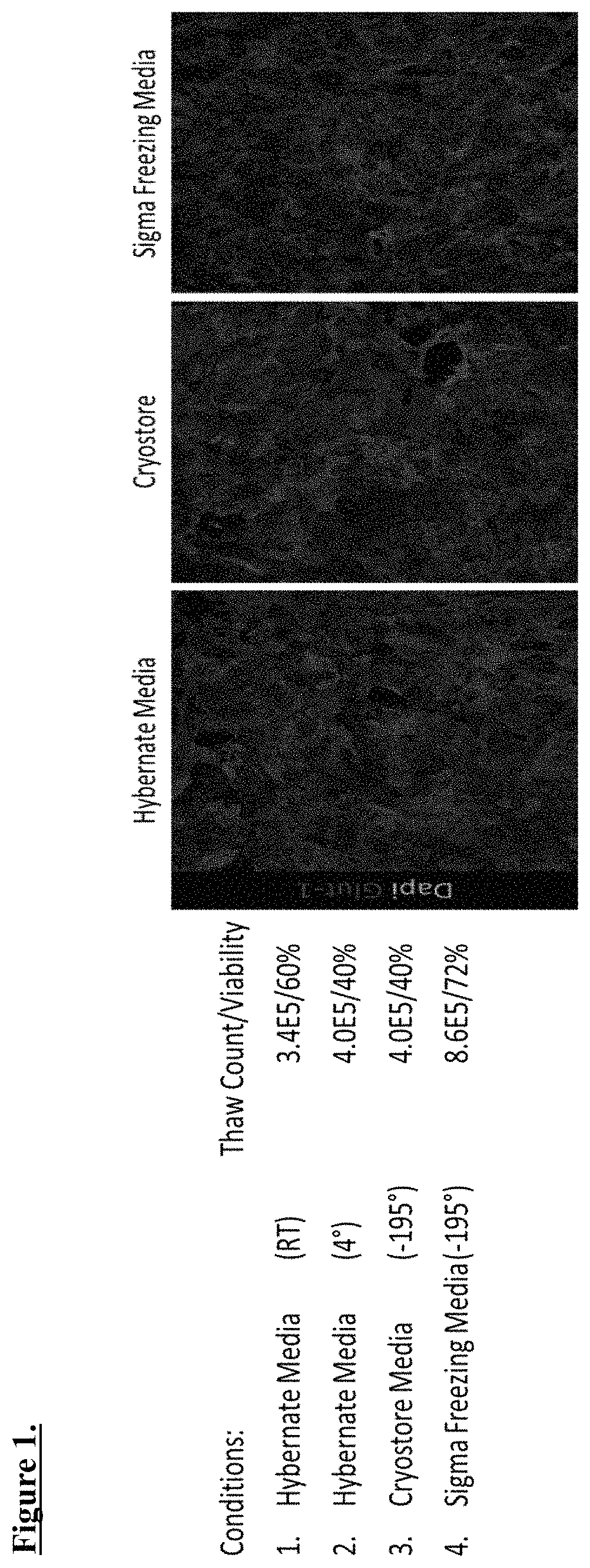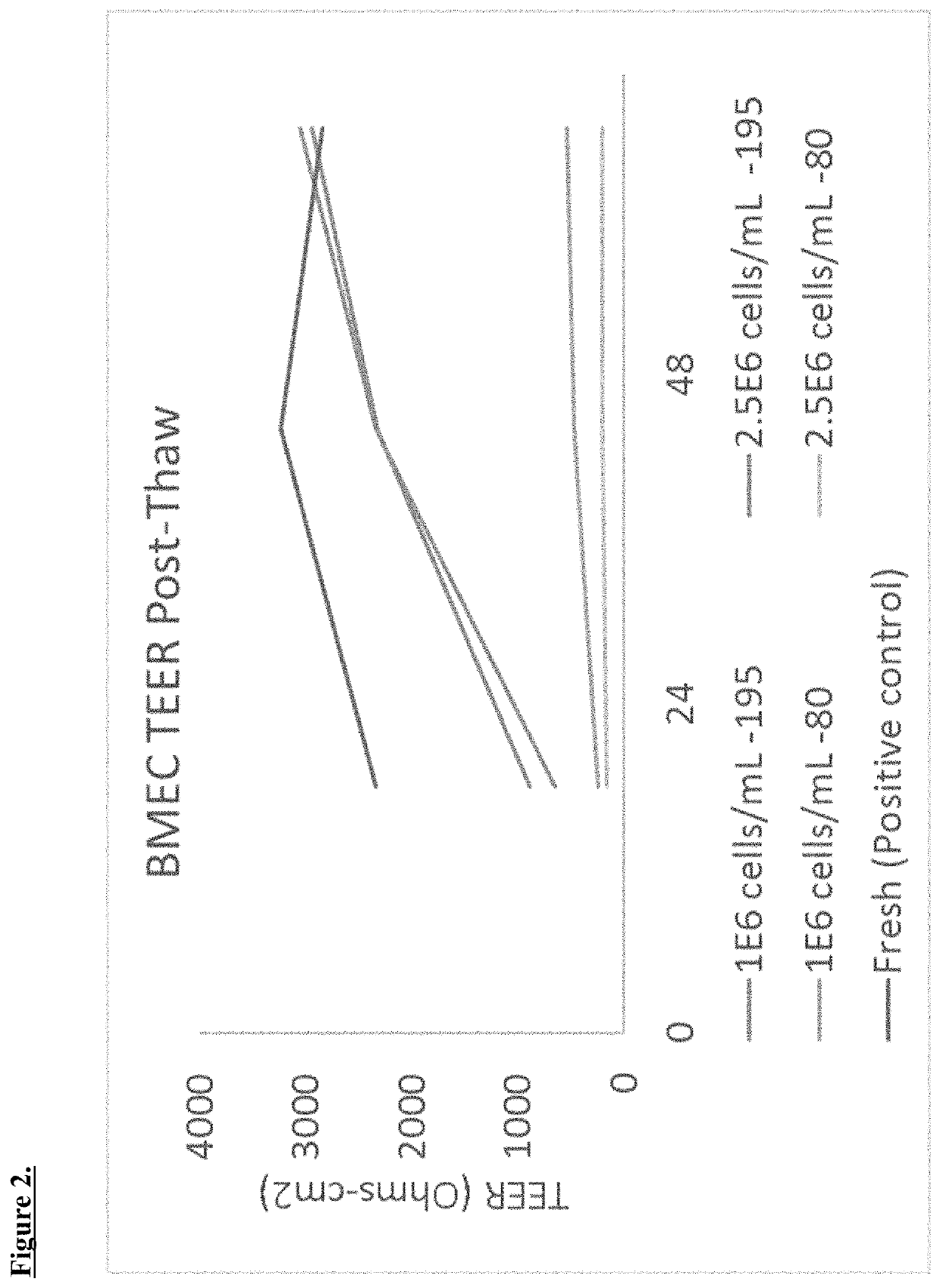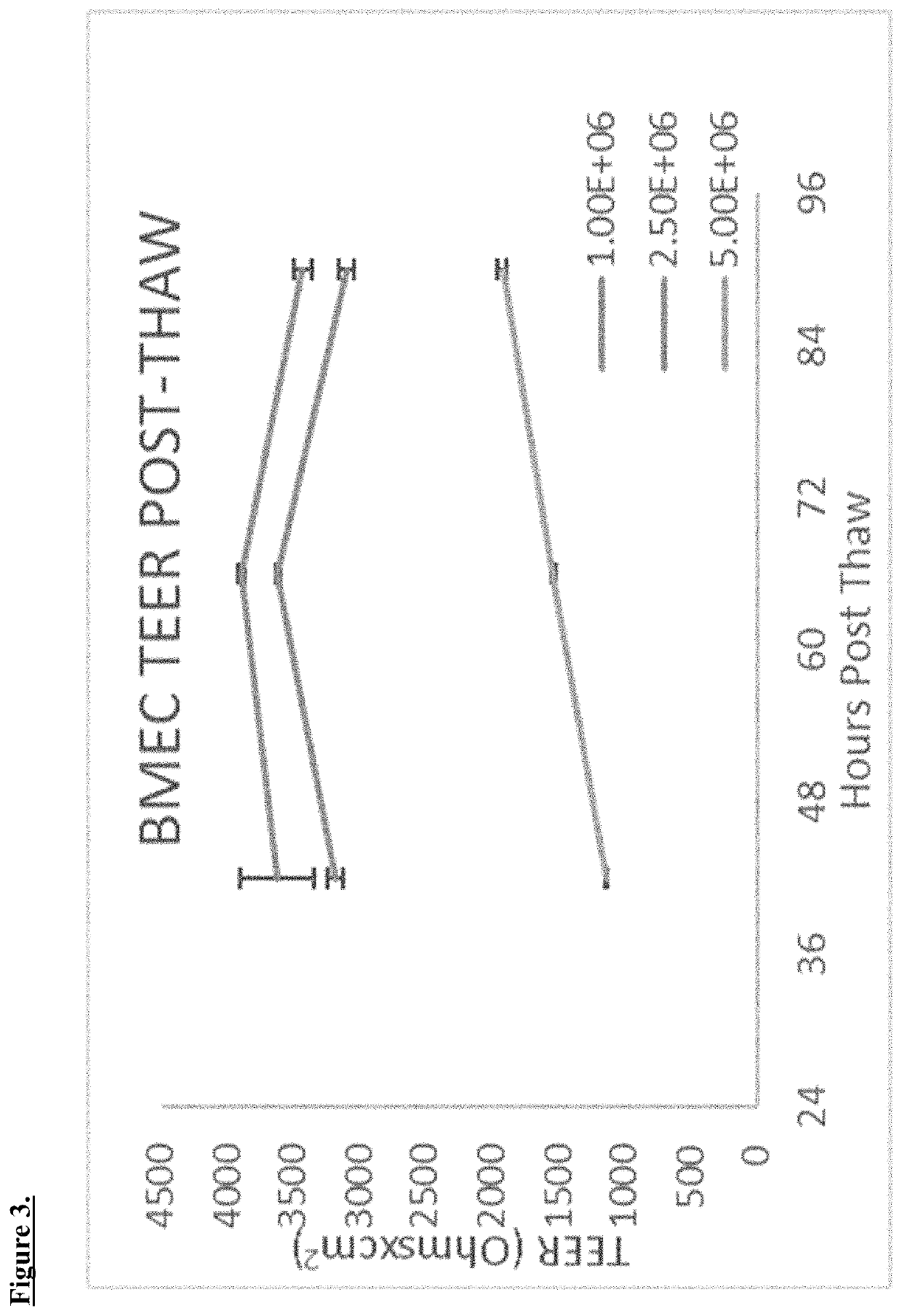Methods and compositions for cryopreservation of endothelial cells
a technology of endothelial cells and compositions, which is applied in the field of compositions for cryopreservation of endothelial cells, can solve the problems of difficult to achieve human brain microvascular endothelial cells (bmecs), which constitute a layer of bbb, and lack of current methods for testing barrier permeability, etc., and achieves the effect of reducing the temperature of the bmec solid
- Summary
- Abstract
- Description
- Claims
- Application Information
AI Technical Summary
Benefits of technology
Problems solved by technology
Method used
Image
Examples
example 1
Preparation of BMECs
[0031]Briefly, techniques for generation of iPSC-derived brain microvascular endothelial cells (BMECs) are described.[0032]iPSCs are cultured at low density and for 8 days what follows is unique cell handling that allow for successful freezing of cells.[0033]Upon BMEC generation, cells colonies are assessed for BMEC formation and quality. If the quality of the culture is acceptable, the cells are incubated in commercial enzyme accutase for 20-25 minutes. Cells are then washed off the plastic with a stereological pipette, diluted in cold phosphate buffer saline (PBS) and centrifuged.[0034]Cells are then resuspended in cold PBS and ran through a 40-micron filter to remove clumps of neural tissue. Removal of neural tissue was observed as an important step in allowing for adequate TEER values post-thaw, potentially due to removal to extracellular nucleating agents that would damage cellular membrane.[0035]Cells are quantified, spun down again, and resuspended in comm...
example 2
BMEC Freezing Protocol
[0037]The use of a controlled rate freezer employs liquid nitrogen to be released as a gas in highly regulated spurts under constantly monitored temperatures of both the chamber of the freezer (chamber) as well as a temperature probe (probe) that has been inserted into a cryovial containing the media (no cells) used to cryopreserve the cells. The software employs both temperature probes for the application of steps in the protocol. One may write protocols using both the chamber temperature or probe temperature as triggers for the next step.
[0038]By adjusting the triggers and / or temperatures one can optimize the freezing process so as to create a protocol that is superior to standard static isopropyl alcohol methods as well as other standard controlled rate freezer protocols. The most critical aspects of the procedure involve the cooling rate for various steps. The cryopreservation of BMEC can be broken down into 5 important steps.[0039]1. Initiation Temperature...
example 3
Thawing Protocol
[0045]BMECs can be thawed in standard fashion by 37° C. water bath. Cells are resuspended immediately in PBS and centrifuged. Cells are then resuspended in endothelial cell media (ECM).[0046]Optimum seeding density was determined to be 1E6 with fresh cells as described in Shelley et al. 15:88 (2014), which is fully incorporated by reference herein.
PUM
| Property | Measurement | Unit |
|---|---|---|
| temperature | aaaaa | aaaaa |
| temperature | aaaaa | aaaaa |
| temperature | aaaaa | aaaaa |
Abstract
Description
Claims
Application Information
 Login to View More
Login to View More - R&D
- Intellectual Property
- Life Sciences
- Materials
- Tech Scout
- Unparalleled Data Quality
- Higher Quality Content
- 60% Fewer Hallucinations
Browse by: Latest US Patents, China's latest patents, Technical Efficacy Thesaurus, Application Domain, Technology Topic, Popular Technical Reports.
© 2025 PatSnap. All rights reserved.Legal|Privacy policy|Modern Slavery Act Transparency Statement|Sitemap|About US| Contact US: help@patsnap.com



